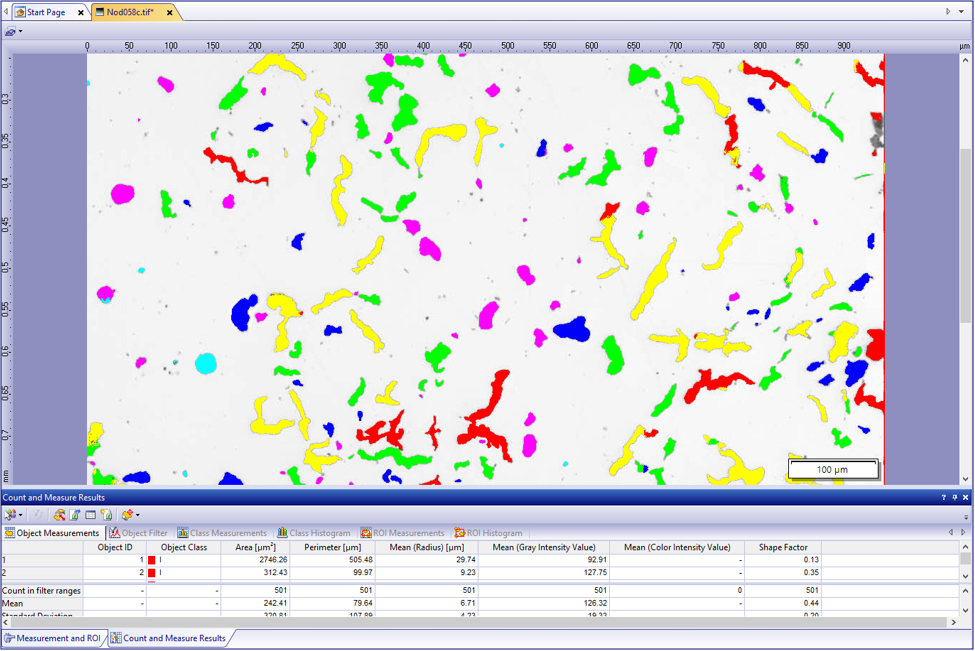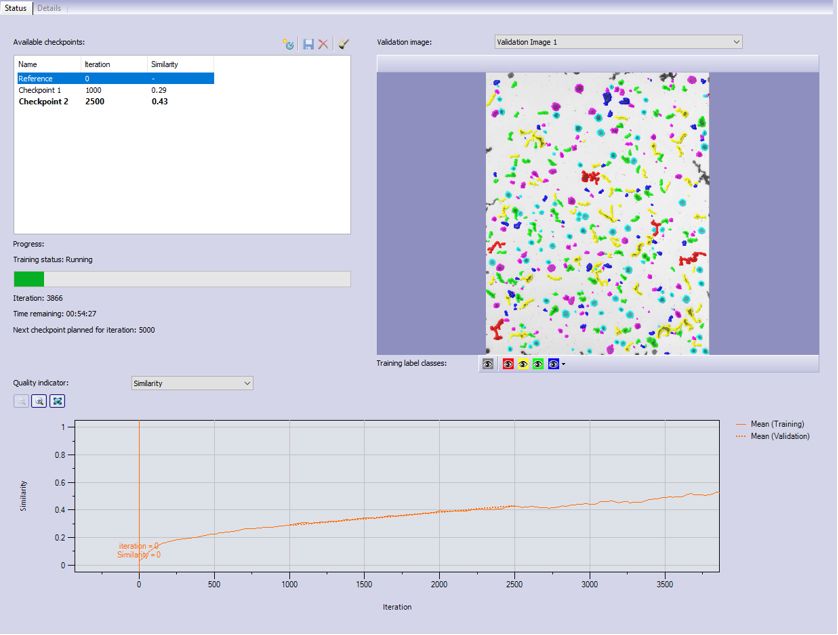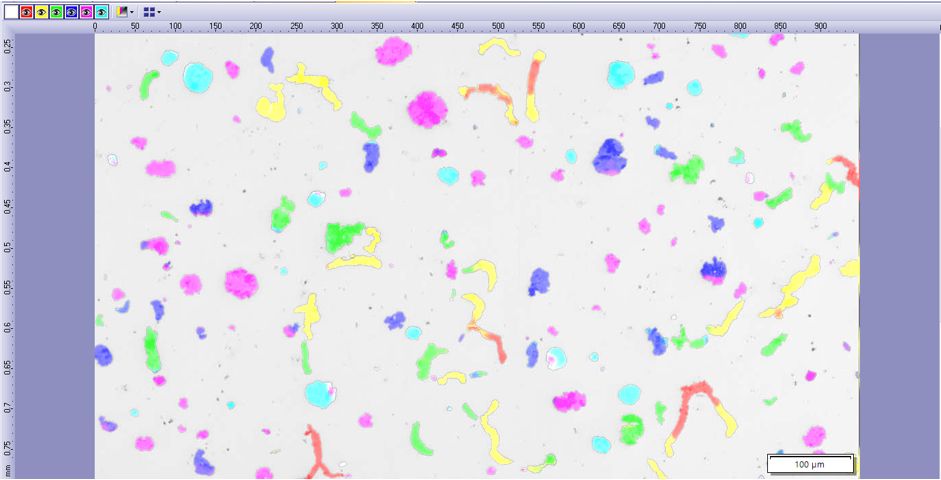TruAI Technology
Industrial Image Analysis for Material Inspections Based on AI Technology
TruAI™ Deep-Learning Technology for Industrial Image Analysis
Quantitative image analysis is a critical step of many materials science, industrial, and quality assurance applications. However, image segmentation using conventional methods that depend on brightness or color can miss critical information or targets in samples—especially when performed by inexperienced users. Since image quality and contrast varies with the sample, image segmentation using classical thresholding methods lacks reproducibility and repeatability.
With Stream Enterprise v. 2.5.3, PRECIV v. 1.2, and CIX100 v. 1.6 our TruAI deep-learning technology is further improved with the introduction of instance segmentation. This capability merges semantic segmentation and the subsequent splitting of objects into one step. Instance segmentation improves workflows by enabling you to tackle difficult applications in one step, requiring no manual post-processing steps or parameter adjustments. Once a neural network model is trained, it can be applied to new images with a single click for immediate analysis results.
The Importance of Deep Learning in Industrial Microscope Inspections
Material inspections often require data from microscope images. For accurate industrial image analysis, segmentation is important to extract the analysis target area from the image. If you want to segment an image based on its morphological features, it is very difficult to achieve high-precision segmentation with the conventional approach of applying thresholds to intensity values and color. While effective, this method can be time consuming and affect the sample condition as you need to manually count and measure each time.
In contrast, TruAI deep-learning technology enables highly efficient and accurate segmentation based on morphological features. After the neural network learns the segmentation results from hand-labeled images, it can apply the same methodology to additional datasets.
Maximize Efficiency in Industrial Image Analysis Using Deep Learning
The Stream Enterprise v. 2.5.3/PRECiV/CIX100 TruAI solution helps maximize efficiency in industrial image analysis.
- Precise detection and segmentation using deep learning delivers efficient and reliable analyses
- Easily train, review, and edit robust neural networks
- Efficient image labeling and trainings using an intuitive interface
- Simple import and export of neural networks
- Fast processing with less than 1-second per position (on an NVIDIA GTX 1060 GPU)
Applying a trained neural network as a segmentation method in the Count and Measure solution automates the analysis so that even inexperienced operators can conduct measurements.
- Eliminates the need for the manual threshold setting
- Especially useful when classical thresholding settings fail
- Reliable, repeatable results in quantitative image analysis even in complex tasks
Watch the video below to get an introduction to our deep-learning approach in microscopy.
How Deep Learning Works in Stream Enterprise v. 2.5.3/PRECiV/CIX100 Software
The TruAI deep-learning workflow is straightforward.

The Stream Enterprise v. 2.5.3/PRECiV/CIX100 TruAI solution uses a combination of multiple convolutional neural networks (CNN) steps to assign individual pixels to a class (U-Net architecture). The quality of the image processing result depends on the quality of the training. The network should be trained with images that are already processed or at least contain the value to be measured (ground truth).
The ground truth for the neural network training is generated with the Stream Enterprise v. 2.5.3/PRECiV/CIX100 TruAI solution using either:
- Classical image processing techniques in the Stream Enterprise v. 2.5.3/PRECiV/CIX100 Count and Measure solution
- Manual hand labeling
For every problem to analyze with deep learning, you must provide a set of images containing the raw data and ground truth.
The created model (inference) is then used as a segmentation method for the Count and Measure solution.
Neural Network Segmentation
The Stream Enterprise v. 2.5.3/PRECiV/CIX100 TruAI solution uses a semantic segmentation method to detect objects in the image, where each pixel of an image is labelled with a corresponding class. Results can be expressed as a probability layer, meaning each pixel gets a probability to match a given class. If only one class is defined, the resulting inference can be used for particle detection.
Deep learning makes detection easy in the Stream Enterprise v. 2.5.3/PRECiV/CIX100 Count and Measure solution. The neural network segmentation detects the objects to measure while the classification per size is performed with the classical mathematical method.
This deep learning solution closely follows common particle detection methods in the materials science field and international standards.

Neural Network Training Options for Stream Enterprise v. 2.5.3/PRECiV/CIX100 Software
To train the neural network in Stream Enterprise v. 2.5.3/PRECiV/CIX100, you can either:
Train the neural network on your own
Train the neural network using the Stream Enterprise v. 2.5.3/PRECiV/CIX100 Deep Learning solution, available for Stream Essentials, Motion, and Desktop and PRECIV Core, Pro, and Desktop. You will also need the Count and Measure solution and a powerful PC. Reach out to Evident for PC recommendations. This approach is ideal for universities, research institutes, or facilities following industry standard procedures for industrial applications.
Let Evident train your neural network
This service is ideal for industrial laboratories, quality control, test labs, or customers with repetitive tasks. You will need the Stream Enterprise v. 2.5.3/PRECiV/CIX100 Count and Measure solution.




